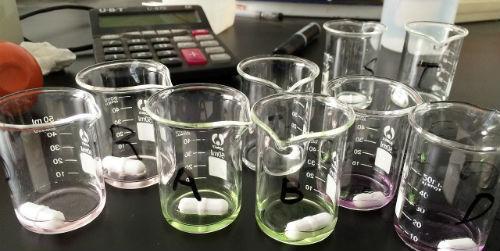The monitoring of international regulations for safety in chemical processes must be taken into account by all members of the sector.
monitoring of international regulations for safety in chemical processes must be taken into account by all members of the sector.
by Fabriciano Pinheiro*
The importance of talking about chemical safety is often underestimated by the belief that it is a topic only connected to the chemical sector, but did you think that any and all industry, be it medicines, automotive, food, cosmetics, paints, retail, petrochemical and many other examples, deals with chemicals and should be concerned about the safe management of these? The issue is a fundamental debate, as it is a daily part of workers, employers and society.
Chemical safety or chemical risk management has gained a strong ally in its application worldwide: the GHS/GHS (Globally Harmonized System of Classification and Labelling of Chemicals), published by the United Nations (UN). Despite the complexity of the name, the EMS is nothing more than a systematic and easy-to-understand approach to the classification of hazards posed by chemicals and communication through labels and safety data sheets.
The main objective of global harmonisation is to provide greater protection for human health and the environment by providing consistent information on the hazards of chemicals. Through an international classification and labelling system, chemical professionals may be aware of the need to minimize exposure, resulting in safer handling, storage, transport and waste. Therefore, all those who are potentially exposed are notified of the possible dangers and risks making a more efficient management of the products.
As director of Intertox, a national reference company in the area of chemical safety, I follow the discussion on the implementation of GHS in Brazil since its inception, being one of the country's representatives in the Subcommittee of Experts of the United Nations. The adoption and implementation of the system is based on four pillars: first, there is the determination of the hazardousness of chemicals through the classification of physical danger to human health (acute or chronic toxicity) and the environment (acute or chronic ecotoxicity in the aquatic environment); the second is the preparation of SDS - Safety Data Sheet, which must contain protective and precautionary measures so that an accident does not occur; the third would be risk communication through product labelling, which is done with universal phrases and symbols; and finally, and perhaps most important of the entire system and management work, is the training of workers to understand the information and importance of GHS.
The basic principle is to harmonize hazard communication in a system that is used worldwide, facilitating companies' compliance with regulatory agency determinations using the same set of criteria. What was thought of by the United Nations and ratified by the countries was the way of working the four pillars necessary to communicate the dangers and precautions with chemicals, being them the pictograms of danger, the words of warning, indications of danger and the phrases of precaution.
The UN EMS to write the manual, the purple book, or English, purple book, took into consideration the following risk classification systems:
- Recommendations concerning the transport of dangerous goods
- Workplace Requirements, U.S. Consumers and Pesticides
- European Union Directives for Dangerous Substances and Preparations (Mixtures)
- Requirements for the Workplace, Consumers and Pesticides in Canada.
There has been a global effort for the implementation of the GHS and, consequently, it is hoped that the harmonization of the international classification of chemical hazards will also promote cost reduction in international trade.
The European Community, through the publication of Regulation No. 1272/2008 on classification, labelling and packaging-CLP, adopted the GHS criteria in the economic bloc, while in Brazil the publication of Ordinance No. 229/2011 by the Ministry of Labor and Employment (MTE), amended regulatory standard No. 26 (No. 26) and established the GHS as a system of classification and communication of hazards for the workplace, stating that the aspects of the application of the GHS must follow the current official technical standard, which is NBR 14725 of the Brazilian Association of Technical Standards (ABNT).
According to updated text NR 26, the MTE defined that for the workplace, any and all chemicals used must be classified, labeled and must have the SDS according to the GHS, in addition to the necessary training for workers to understand the information. This became the guide for any industry that has employees and uses chemicals.
A major milestone in Brazil took place on the first of June 2015, which became the deadline for the adaptation of the classification and SDS of mixed chemicals. The date is very important because any Brazilian industry works with mixtures, whether in handling or marketing, which consolidates the global implementation of GHS in Brazil; The only exception is for the labelling of mixtures according to the GHS which still has the deadline until November 30, 2015.
Society as a whole has much to gain from the implementation of GHS, which becomes the safe basis for handling any chemical. The initiative will guarantee greater safety for all, be it the worker during contact in the workplaces, the consumer in the handling with chemical products, but also the environment, fauna and flora.
*Fabriciano Pinheiro is a biomedical and received a master's degree in Toxicology and Toxicological Analysis. The technical director of Intertox is coordinator of the postgraduate course in Toxicological Science and professor of Toxicology at the Oswaldo Cruz University and also coordinates for more than five years the studies of the Commission "Information on safety and the environment related to chemical products" of the Brazilian Chemistry Committee of the ABNT. The teacher represented Brazil in the UN Subcommittee of Experts on GHS in the last year.

























Leave your comment